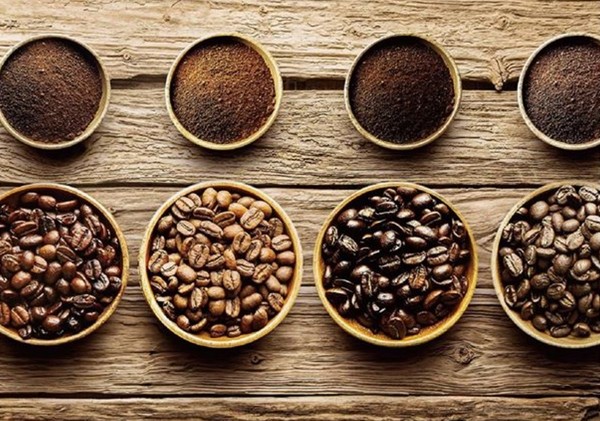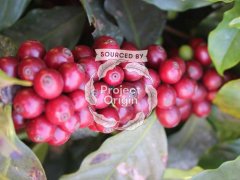What's the difference between Arabica and Roberta coffee beans? How to drink Robusta coffee powder

Professional coffee knowledge exchange more coffee bean information please follow the coffee workshop (Wechat official account cafe_style)
Manning's Robusta pedigree, Arabica beans or Katim or Katim?
The global coffee bean tree species are mainly divided into Arabica and Canephora, of which Arabica coffee beans account for about 70% and 80%.
Planting condition difference
[Elaraby Kadou]
Arabica coffee has harsh planting conditions, weak disease resistance, high altitude requirements, slow growth, high quality, and fine processing of raw beans.
Growing at colder altitudes in the tropics, it is an important kind of commercial coffee with a fruiting period of less than three years and a high-quality aroma and sour taste. Arabica coffee beans are mainly produced in South America (except parts of Argentina and Brazil), Central America, Africa (Kenya, Ethiopia, etc., mainly East African countries), Asia (parts of Yemen, India and Papua New Guinea)
[Arabica Coffee Tree]
The Arabica coffee tree, which originated in Ethiopia, accounts for 70% of the world's coffee bean production. The world-famous blue mountain caffeine and mocha coffee are almost all Arabica species. Arabica coffee trees are suitable for growing in high mountains with great temperature difference between day and night, and ten soils with low humidity and good drainage. The ideal altitude is 500m-2000 m. The higher the altitude, the better the quality. However, due to the weak ability to resist diseases and insect pests, it is more difficult to grow than the other two coffee trees.
[Robusta beans]
Rob Stado grows in the lowlands between 200m and 600m above sea level. He likes the warm climate and requires a temperature of 24 ℃. The requirement for rainfall is not high. However, this variety depends on insects or wind to pollinate, so it takes 11 months for coffee to pollinate, which is longer than the Arabica species.
[Robasta Coffee Tree]
The Robastian coffee tree, which originated in the Congo in Africa, accounts for about 20% of the world's production. Luoba Jinta coffee tree is suitable for planting in the lowlands below 500 meters above sea level, has strong adaptability to external environment, has strong resistance to disease, and has high yield. It does not need much artificial care during soil preparation, weeding and pruning, and can be allowed to grow in the wild. It is a kind of coffee tree that is easy to cultivate.
[shape difference]
Elaraby coffee bean fruit is oval, there are generally two slightly flat beans, the bean body is small and round, the front is long oval, the middle crack is narrow and curved S-shaped, and the arc on the back of the bean is flat. The main producing areas are South America, Central American countries, Africa and Asia.
Robbda coffee beans are oval in shape, small and round in shape, with a slightly inflated side with cracks in the middle, straight grooves, weak aroma and bitter taste, reminiscent of soybeans, mainly used to make instant coffee, because they are produced in Africa and Asia. So most Africans drink Robasta coffee.
Different flavors and characteristics
[Arabica] Coffee has a varied and broad potential flavor. Arabica coffee produced in different regions, different elevations and different climates usually has its own characteristics and can show a completely different flavor. "Arabica" coffee smells like grass when it is not roasted, and after proper roasting, it shows "fruity" (light roasting) and "caramel sweetness" (medium or deep roasting). In general, 100% Arabica beans have a better aroma and flavor. It makes it the only coffee among these original species that can be drunk directly and alone, and can be used as a single product or as an Italian blend of coffee.
The concentration made by Arabica:
[Robusta] Coffee is usually mundane, rigid and pungent, and because the vast majority of robusta around the world are grown in low-altitude areas (currently only high-altitude, high-quality, washed robusta coffee beans rarely grown in India) different regions and different climates do not produce much difference in flavor and lack of personality. When unbaked, it smells like raw peanuts, and the taste of cheap robusta coffee beans is usually between "wheat tea" (light baking) and "rubber tire flavor" (deep roasting). It is difficult to show a meticulous flavor.
The concentration made by Robusta:
What is mixed coffee?
Different coffee beans have different personalities because of different varieties and producing areas, and there are subtle differences in sour, bitter, sweet, aroma, mellow thickness and other flavors. Single coffee beans tend to show the unique characteristics of a certain kind of coffee. And blended coffee, also known as mixed coffee, is to mix all kinds of single coffee beans together, so as to give full play to the strengths of various single coffee beans, learn from each other, or complement or strengthen each other in taste, thus creating a richer new taste of coffee.
In order to actually use these combinations, we must first understand the flavor of dozens of individual coffees, and each coffee shop will spell out different proportions of coffee beans according to its own characteristics. Here are several representative mixing proportions. Of course, you can also challenge yourself to try to find the proportion you like.
I. sour espresso blending: 30% in Colombia, 60% in Brazil, 10% in Guatemala (below)
Second, the general mixed coffee blending method: Colombia 30%, Brazil 60%, Robusta 10%.
Third, bitterness mixed commercial coffee blending method: Colombia 30%, Brazil 30%, Kilimanjaro 30%, Robusta 10%. (figure below)
There are two spelling methods for spelling beans: first bake, then mix and then bake, also known as cooked and cooked, which is a greater test for bakers; the purpose of raising the mixed beans for a few more days is to make the beans blend in character and have a balanced flavor; cooked beans usually take about 10 days, and can be used in 5-7 days, because different beans are already affecting each other when baking.
The Revolution of Robusta Robusta Coffee why Robusta Coffee beans are notorious
Important Notice :
前街咖啡 FrontStreet Coffee has moved to new addredd:
FrontStreet Coffee Address: 315,Donghua East Road,GuangZhou
Tel:020 38364473
- Prev

How does the coffee industry define Robusta and Arabica coffee beans? Roberta coffee beans
Professional coffee knowledge exchange more coffee bean information please follow the coffee workshop (Wechat official account cafe_style) Manning's Robsta blood, Arabica beans or Katim or Katim? What's the difference between Arabica coffee beans and Roberta coffee beans? It has nothing to do with botany, nor does it have anything to do with boutique coffee, or even whether we drink a cup of pure coffee.
- Next

American coffee is actually filter coffee. Starbucks filter coffee and this week's coffee are both American coffee.
Professional coffee knowledge exchange more coffee bean information please pay attention to the coffee workshop (Wechat official account cafe_style) why the coarse ground coffee powder is suitable for trickle-down coffee powder common grinding details of coffee powder Italians call espresso as the base, diluted coffee with water as American coffee, but in fact the real American coffee, that is, the coffee that Americans drink most often.
Related
- Beginners will see the "Coffee pull flower" guide!
- What is the difference between ice blog purified milk and ordinary milk coffee?
- Why is the Philippines the largest producer of crops in Liberia?
- For coffee extraction, should the fine powder be retained?
- How does extracted espresso fill pressed powder? How much strength does it take to press the powder?
- How to make jasmine cold extract coffee? Is the jasmine + latte good?
- Will this little toy really make the coffee taste better? How does Lily Drip affect coffee extraction?
- Will the action of slapping the filter cup also affect coffee extraction?
- What's the difference between powder-to-water ratio and powder-to-liquid ratio?
- What is the Ethiopian local species? What does it have to do with Heirloom native species?

